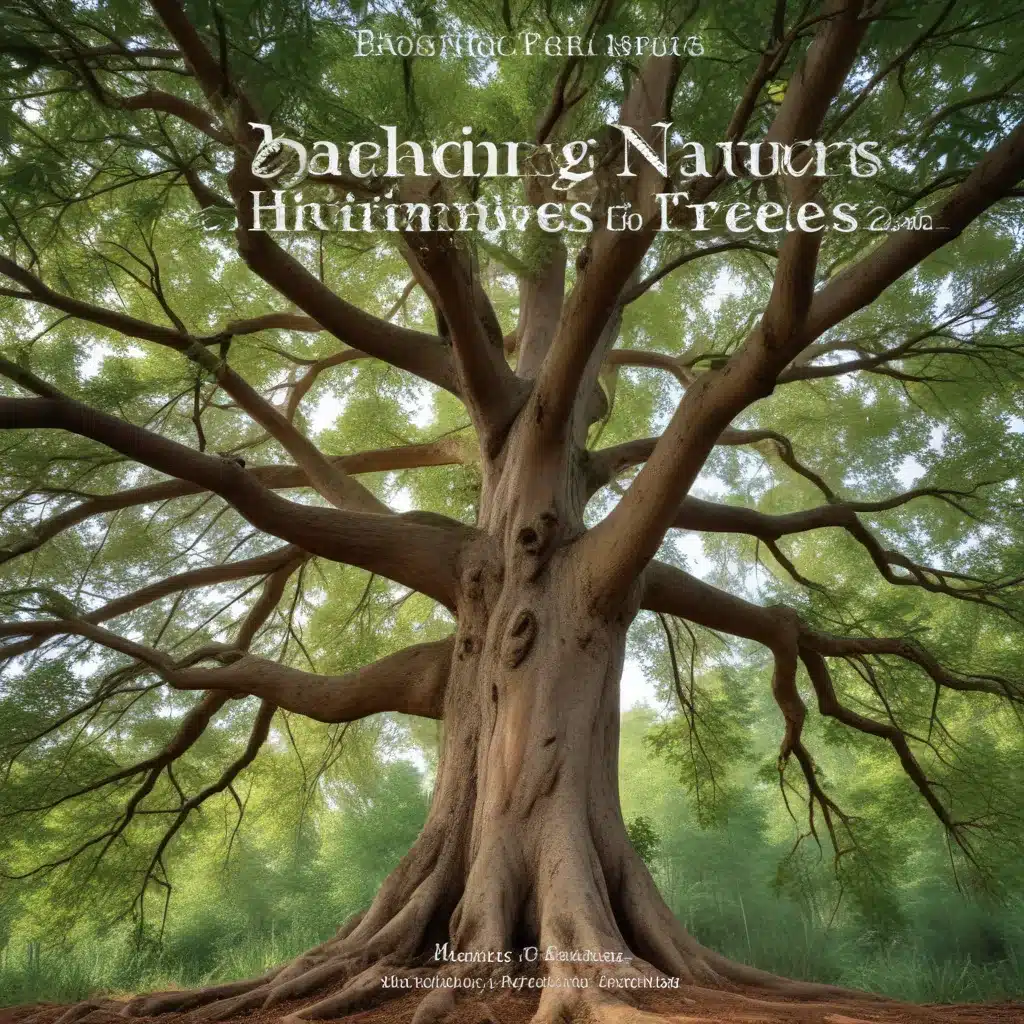
At TriCounty Tree Care, we understand that the well-being of trees extends far beyond surface-level symptoms. Trees are highly adapted, dynamic organisms that thrive within intricate ecological systems. By adopting a holistic perspective and leveraging adaptive strategies, arborists can cultivate resilient, long-lived trees that not only beautify our landscapes but also provide invaluable ecosystem services.
Understanding Natural Tree Rhythms
Holistic Perspective on Tree Ecosystems
Trees do not exist in isolation; they are deeply interconnected with the broader environment. Soil composition, nutrient cycling, hydrology, climate patterns, and even microbial communities all play pivotal roles in shaping tree health and vigor. Viewing the tree as part of a complex, living system is crucial for developing effective management approaches.
The 14 Patterns of Biophilic Design highlight how human connection to nature, including the presence of healthy trees, can enhance our physical and mental well-being. Recognizing these reciprocal benefits encourages a stewardship mindset, where trees are nurtured not merely as ornamental elements, but as vital components of thriving, biophilic landscapes.
Adaptive Strategies for Resilient Trees
To cultivate robust, adaptable trees, arborists must go beyond reactive, symptom-based care. Proactive, holistic interventions that optimize a tree’s physiological processes can imbue remarkable resilience in the face of environmental stressors.
Optimizing Nutrient Intake: Analyzing soil fertility and providing targeted, balanced nutrient supplementation can enhance a tree’s ability to uptake essential minerals, promote vigorous growth, and withstand biotic and abiotic pressures.
Fostering Water Resilience: Understanding a tree’s water requirements and implementing strategies like mulching, irrigation management, and root zone aeration can help trees better navigate periods of drought or waterlogging.
Promoting Structural Integrity: Employing techniques such as structural pruning, cabling/bracing, and root system enhancement can reinforce a tree’s physical architecture, improving its capacity to resist mechanical stresses and damage.
Nurturing Healthy Tree Growth
Seasonal Considerations
Trees exhibit distinct physiological rhythms that align with the changing seasons. Recognizing and working in harmony with these natural cycles is key to optimizing tree health.
Spring Rejuvenation: As temperatures rise and daylight lengthens, trees emerge from dormancy, redirecting resources to bud break, leaf expansion, and root growth. This is an opportune time for pruning, nutrient applications, and other restorative measures.
Summer Maintenance: During the active growing season, trees focus on photosynthesis, tissue development, and resource storage. Vigilant monitoring, pest/disease management, and irrigation become essential to sustain vigor.
Autumn Preparations: As daylight wanes, trees shift toward dormancy, hardening off their tissues and redirecting energy reserves belowground. Preparing trees for winter through mulching, late-season pruning, and root-zone care can enhance their chances of surviving the cold.
Soil Health Management
The foundation of a thriving tree lies in the soil. Improving soil composition and nurturing the soil microbiome are crucial strategies for fostering long-term tree health.
Improving Soil Composition: Analyzing soil texture, pH, and nutrient levels can inform targeted amendments, such as compost, biochar, or mineral supplements, to optimize the rooting environment.
Enhancing Soil Microbiology: Promoting the abundance and diversity of beneficial microorganisms through practices like mycorrhizal inoculation and compost tea application can enhance nutrient cycling, root growth, and disease suppression.
Mitigating Environmental Stressors
Climate Adaptation Techniques
As the climate continues to shift, trees must contend with increasingly unpredictable and extreme environmental conditions. Proactive strategies can help trees adapt and thrive in the face of these challenges.
Drought Resistance: Selecting drought-tolerant tree species, incorporating water-conserving irrigation methods, and utilizing mulches and soil amendments can fortify trees against periods of limited precipitation.
Cold Hardiness: Choosing cold-hardy cultivars, providing insulation for vulnerable tissues, and promoting late-season dormancy can bolster a tree’s capacity to withstand frigid temperatures and freeze-thaw cycles.
Pest and Disease Management
Trees face an array of biotic threats, from insects and pathogens to invasive species. Sustainable management approaches prioritize early detection, biological control, and cultural practices over heavy reliance on pesticides.
Identifying Threats: Vigilant monitoring and diagnostics can help arborists quickly pinpoint the source of any tree health issues, enabling timely and appropriate interventions.
Sustainable Control Methods: Integrating tactics like beneficial organism introduction, habitat manipulation, and cultural controls can create an ecologically balanced environment less conducive to pest outbreaks and disease proliferation.
Promoting Regenerative Practices
Sustainable Forestry Approaches
In the realm of commercial and urban forestry, adopting regenerative management strategies can ensure the long-term vitality of tree populations while minimizing environmental impacts.
Selective Harvesting: Carefully planned, selective timber harvesting that prioritizes the retention of high-value, structurally sound trees can promote stand resilience and natural regeneration.
Reforestation Strategies: Implementing diverse, site-adapted tree planting schemes and employing natural regeneration techniques can restore ecosystem function and biodiversity in degraded or deforested areas.
Community-Driven Initiatives
Engaging local communities in tree stewardship efforts can cultivate a sense of ownership and investment in the long-term health of the urban forest.
Urban Tree Planting: Collaborating with municipal authorities, non-profit organizations, and citizen volunteers to strategically plant and maintain diverse, climate-adapted trees can enhance the livability and ecological resilience of our cities.
Educational Outreach: Providing hands-on training, workshops, and public awareness campaigns can empower homeowners, landscape professionals, and community members to become active stewards of the trees in their care.
By embracing a holistic, adaptive approach to tree care, the arborists at TriCounty Tree Care are dedicated to nurturing healthy, resilient trees that thrive within their local ecosystems. Through proactive, science-based interventions and community-driven initiatives, we strive to create vibrant, biophilic landscapes that benefit both people and the environment.


